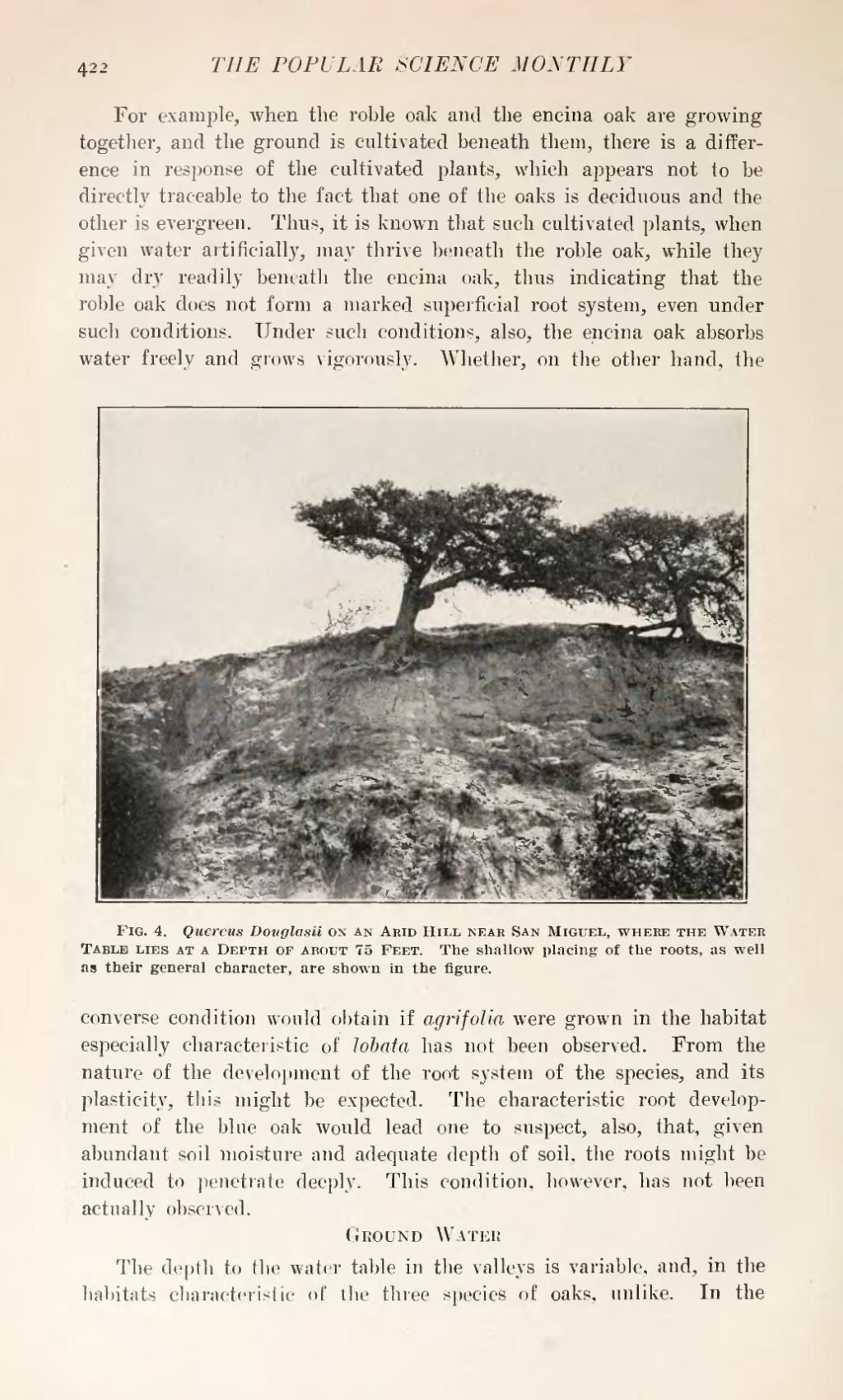For example, when the roble oak and the enema oak are growing together, and the ground is cultivated beneath them, there is a difference in response of the cultivated plants, which appears not to be directly traceable to the fact that one of the oaks is deciduous and the other is evergreen. Thus, it is known that such cultivated plants, when given water artificially, may thrive beneath the roble oak, while they may dry readily beneath the enema oak, thus indicating that the roble oak does not form a marked superficial root system, even under such conditions. Under such conditions, also, the encina oak absorbs water freely and grows vigorously. Whether, on the other hand, the
Fig. 4. Quercus Douglasii on an Arid Hill near San Miguel, where the Water Table lies at a Depth of about 75 Feet. The shallow placing of the roots, as well as their general character, are shown in the figure.
converse condition would obtain if agrifolia were grown in the habitat especially characteristic of lobata has not been observed. From the nature of the development of the root system of the species, and its plasticity, this might be expected. The characteristic root development of the blue oak would lead one to suspect, also, that, given abundant soil moisture and adequate depth of soil, the roots might be induced to penetrate deeply. This condition, however, has not been actually observed.
Ground Water
The depth to the water table in the valleys is variable, and, in the habitats characteristic of the three species of oaks, unlike. In the

